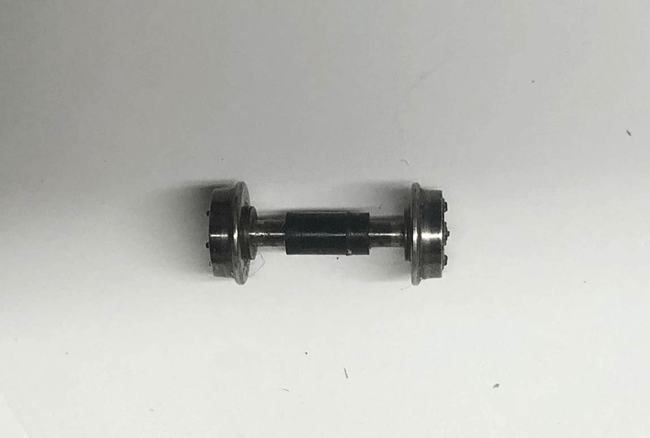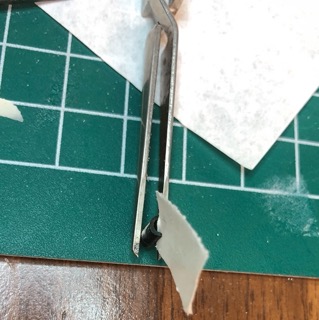In my profession of medicine, we typically gather the facts of a case, formulate a differential diagnosis, which is a list of possibilities in rank order of likelihood, then undertake whatever investigations are needed to arrive at a correct diagnosis, which in turn points us to a treatment plan. With my interest in traction modeling problem solving, the same diagnostic method was applied to fixing a significant but easily remedied problem with the Bowser Traction Mechanism in an HO scale streetcar.
CASE SUMMARY:
The car at issue is a Fairfield Models HO model of a San Francisco "Torpedo" PCC one of 10 double-ended PCC’s that were acquired by San Francisco Municipal Railways in 1949. The car was purchased around 1989 from Ed Skuchas, was painted and lettered by East Penn member Norman Houser around 1992, and when my layout became operational in 1997, was one of my first cars. The initial drive was replaced by East Penn member Jack Spedden in 1999, before I learned how to do the conversions. Jack installed a Bowser #125100 traction drive with 26" wheels and an A-Line #20040 flywheel, and after resolving some overhead pole tracking issues, it ran beautifully for 23 years. Recently, the car began derailing in odd ways. The rear truck would derail and then pull the front truck off the rails. It also demonstrated herky-jerky, stuttering type running. Diagnostics studies were undertaken.
STRATEGY:
With any derailment problem, the first thing was to check wheel gauge, which on cursory examination was correct. The next was to determine if the trucks turn freely, which they did. Next examination was to be certain that all the wheels on the power truck turned when power was applied, which they did. The next thing was to check is if all the wheels on the trailing truck turned. But the rear axle of the truck did not turn freely, either with the car or the tracks, or turning them with a finger. So the next step was to remove the snap-on plate, Bowser part #1292, that holds the wheels and axles into the truck assembly. This revealed the problem.
SOLUTION:
When the rear wheels and axle were removed, the first thing noticed was that one of the stub axles was no longer snuggly held in the space sleeve, Bowser Part #1291, that holds both wheel and axle sets together. A close look under magnification revealed that there was radial split in the sleeve, which made the wheel loose and unstable in the sleeve and easily out of gauge. Why the wheels don’t turn when the plate is in place is uncertain. It might relate to the bulge created where the sleeve is split. When the errant part #1291 was replaced, the problem was solved, and smooth operation was restored.
 Figure 1. Bowser part #1291 between two wheel axle assemblies! Figure 1. Bowser part #1291 between two wheel axle assemblies! |

Figure 2. A thin piece of styrene has been inserted in the radial break in the Bowser #1291. Replacing the #1291 solved the problem! |
DISCUSSION:
HO traction modelers have been using the Bowser traction drives since their introduction in 1999. Since that time, the drive has been a game changer. It is affordable, easy to install and if necessary, repair. For many of us, it is the default selection for powering models. Nonetheless, with time and operation, parts wear out. This is not due to any design flaw, but simple wear and tear. Those of us who use the Bowser drive, especially for any length of time, should maintain a stash of replacement parts, the most common of which are the sleeves for the stub axles. They are cheap, and the removal of the defective one and insertion of the stub axles into the sleeves takes less than 3 minutes, including the five second task of verifying the gauge. And if it is determined to be a cause for the problem, it cannot be ignored. And since the replacements are so cheap, attempting to repair a split one is a fool’s errand. Also recommended is keeping several of the sleeves with the gears for the drive truck, although so far, one of these has not suffered the same fate.
EDITORS NOTE: Bowser Manufacturing became aware of the issue with part #1291 during production of the second batch of HO scale San Francisco Muni 'F' Line PCC cars in 2010. Due to the close clearances between part #1291 and part #1292, a complete redesign of the trailing truck would have been required to strengthen the part and solve this problem. Note that the part only failed after many years of operation and the cost of redesign versus the cost of the replacement part made such a redesign economically unfeasible.